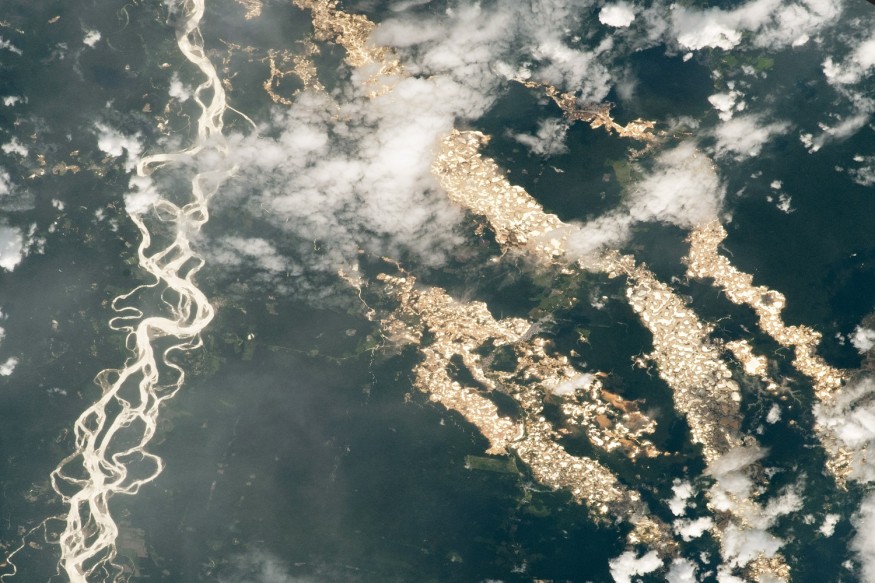NASA photos show rivers of gold in the Amazon rainforest. Back at the International Space Station, the unusual images display large mine holes reflecting sunshine.

Although that shimmer is only sunlight reflecting hundreds of dirty water pits, in them thar hills, there is plenty of gold. An astronaut on the orbital space station took stunning images of secret holes in December.
The Inambari River and the Tambopata National Reserve are the worm-like interwoven channels on the left side of the chart and visible just below the clouds on the frame's top right. While experts mildly modified the image to enhance contrast, the astronaut shot the photo with a Nikon D5 digital camera, according to IFL Science.
Unfortunately, NASA's Earth Observatory said each glistening pool is a gold-prospecting trap.
These rivers are thought to have been dug illegally as part of a gold rush in the Madre de Dios area in southeastern Peru.
With thousands of miners struggling to make a living in a relative free-for-all in the area, the nation is a leading gold exporter.
Yet researchers agree the region is full of life and essential ecosystems destroyed by industry and deforestation as a consequence.
River of Gold: All That Glitters is Not Gold
Mining is often reported to be poisoning local populations since the refining of gold requires loads of mercury.
A large volume of radioactive material goes into rivers or the environment, scientists claim.
NASA states that the pits where miners are digging for the precious metal look like hundreds of water-filled basins, surrounded by mud where vegetation has been removed.
Miners trace the tracks of ancient rivers where sediments have been accumulated, like fossils.
These unchecked practices pose a danger to local populations as well.
According to Nature.com, miners combine sediments with boiled mercury so as to distinguish gold from other minerals. Consequently, each year up to 55 tons (50 metric tons) of mercury end up in rivers or the atmosphere.
Locals that consume a lot of seafood from these contaminated waters are more than three times more likely than non-fish-eaters to get mercury poisoning, a PLOS One report showed in 2012.
Scientists claim in a separate PLOS One study that mining in the area, which is home to wildlife like chimpanzees, jaguars and butterflies, is the leading cause of deforestation.
A report showed in January 2019 that, according to the Andean Amazon Project's Monitoring group, gold mining deforestation killed an estimated 22,930 acres of Peru's Amazon in 2018.
Buoyed by the increasing price of gold, sometimes poor people from local areas see a chance to make a profit from mining.
Gold Mining: Is The Illegal Operation Still Ongoing?
An approximate 30,000 small-scale miners were involved in the lush area in 2012, reports the BBC.
La Pampa, another region of Peru, was the center of a major gold rush that lasted for nearly a decade.
In 2019, after about 5,000 miners were removed, the government eventually stopped it.
Check out more news and information on Space and Climate Change on Science Times.
© 2026 ScienceTimes.com All rights reserved. Do not reproduce without permission. The window to the world of Science Times.












